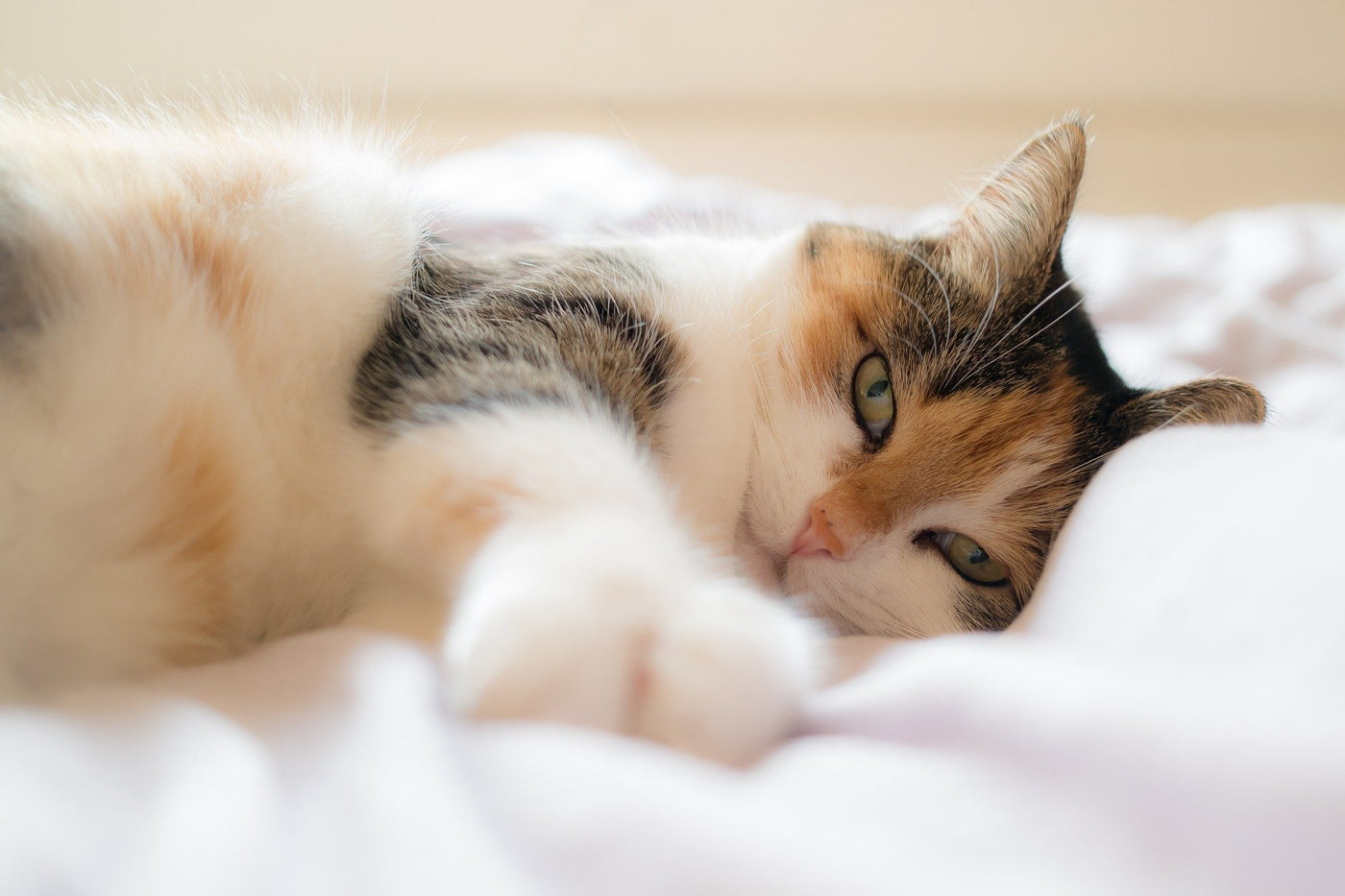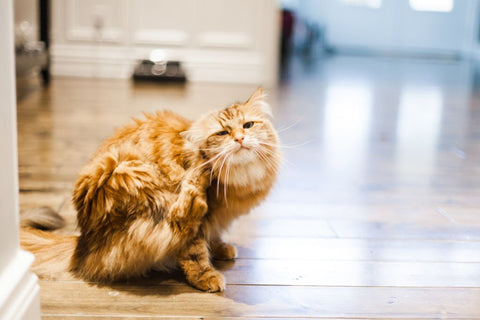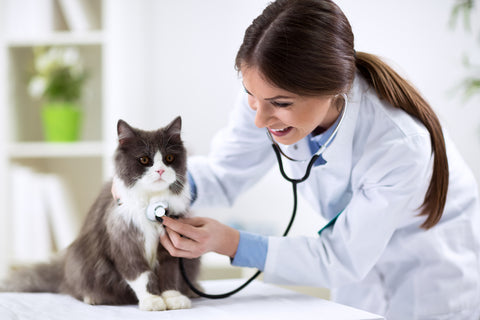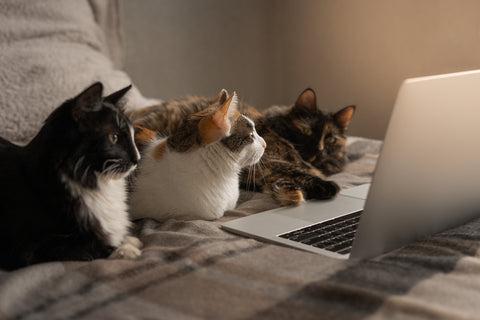
Haemophilia in cats is a group of rare hereditary bleeding disorders in which a cat’s blood doesn’t clot appropriately in case of an injury. Although uncommon, haemophilia is a severe condition that can be inborn or acquired. This article aims to explain what happens when a cat bleeds, how bleeding disorders develop, and what haemophilia really is.
Background information
Whenever bleeding occurs in an organ or a body part, a process called hemostasis is activated to stop the bleeding. Hemostasis is the first stage of healing of all wounds, and it serves to keep blood within a damaged blood vessel. This process can be broken down into the following steps (Figure 1):
1. The first response after an injury is vascular spasm or vasoconstriction. If bleeding occurred, that means that the wall of a blood vessel was damaged. A healthy blood vessel is responsive and will narrow down immediately to slow down the blood flow and allow the clotting process to begin. The constriction of the vessels allows less blood to be lost.
2. Thrombocyte plug formation. Thrombocytes, or platelet cells, rush to the broken wall to form a clot and plug the break in the vessel wall. Thrombocytes stick together and form a temporary seal to cover the break.
3. The last step is coagulation (blood clotting). Once the thrombocytes create plug, 13 proteins in the blood called clotting factors are activated in a sequence known as a coagulation cascade. The coagulation cascade leads to the formation of a substance called fibrin. Fibrin is produced by the thrombocytes and acts like a glue helping to hold thrombocytes in place. During this process, some erythrocytes and leukocytes (red and white blood cells) are being trapped into this structure, and the resultant plug is called a CLOT. Therefore, the clot contains thrombocytes, fibrin and red and white blood cells.

Figure 1: Steps of Hemostasis
Adequate hemostasis therefore requires a sufficient number of platelets circulating in the blood, blood vessels that constrict properly, and the appropriate activation of the coagulation cascade (clotting factors). Abnormalities in any of these factors can lead to abnormal hemostasis. Hemostatic abnormalities are classified into four categories: 1) thrombocytopenia (low levels of thrombocytes), 2) dysfunction of thrombocytes, 3) vasculopathies (abnormalities of blood vessels) and 4) low levels or activity of coagulation factors.
What is haemophilia?
Haemophilia belongs to the fourth mentioned hemostatic abnormality, and it is caused by decreased levels of coagulation factors. There are 13 coagulation factors in total (numbered from I to XIII). Deficiency in any of these factors will result in haemophilia. Haemophilic cats can’t coagulate blood properly, and their bleeding therefore isn’t controlled adequately. Feline haemophilia is most commonly congenital (inherited, inborn), although it can also be acquired (due to vitamin K absence or rodenticide poisoning, for example).

Types of congenital haemophilia
Best known variants of congenital haemophilia in cats are haemophilia A and B and Hageman deficiency.
1. Haemophilia A, or classic haemophilia, is a rare disease among cats that has also been reported in humans, dogs, and horses. Haemophilia A includes the deficiency of coagulation factor VIII, and it is an X-linked recessive disorder. This means that the gene for coagulation factor VIII is located on the X chromosome and that the mutated variant of the gene won’t express itself in the presence of the normal variant (more about this in the section "Genetics"). The severity and frequency of bleeding in haemophilia A is determined by the degree of factor VIII deficiency.
2. Haemophilia B, also known as Christmas disease, is an X chromosome-linked recessive deficiency of coagulation factor IX. Haemophilia B is reported to be inherited in British shorthair cats.
3. Hageman deficiency is an autosomal recessive disorder and is defined by a deficiency in coagulation factor XII. This deficiency does not result in spontaneous bleeding like haemophilia A and B.
Genetics
Haemophilia A is caused by a mutation in the gene for coagulation factor VIII, and haemophilia B by a mutation in the gene for coagulation factor IX. Both of these genes are located on the X chromosomes, and the healthy variants are dominant over the mutated variants. Female cats carry two X chromosomes, while males carry one X and one Y chromosome. Therefore, female cats will always carry two genes for these coagulation factors, but males will only carry one. The mutated variants of the genes are expressed only when there are no healthy, dominant variants in the genotype. The following inheritance rules apply when it comes to haemophilia A and B:
1. All males who inherit a mutated gene for coagulation factor will be affected by the condition and will pass the mutated gene to their offspring.
2. Males who inherit the healthy gene are never affected and cannot transmit the disease to their offspring.
3. Females who carry a mutated gene on one of their X chromosomes, and a healthy gene on the other X chromosome, will be silent carriers. This means that they won’t be affected by the condition themselves, but they can pass it on to their offspring.
4. Females who carry a mutated gene on each of their two X chromosomes are always affected and will pass on the mutated gene to their offspring.

While haemophilia A and B are X-linked disorders, Hageman deficiency is an autosomal disorder. That means that the gene for factor XII is located on an autosomal chromosome and not a sex chromosome. In humans, the gene coding for this factor is identified as F12 gene.
Symptoms and diagnosis
The clinical symptoms of haemophilia are similar for all types of the disease. Haemophiliacs often show weakness, fever and lack of appetite. Lameness and swelling of the joints may occur due to spontaneous bleeding into the joints. Bleeding under the skin can cause hematomas (soft swellings). Internal bleeding in organs and body cavities can result in bloody or dark stool and vomit, rectal or vaginal bleeding and nose bleeding.
If a feline affected by the condition undergoes trauma or surgery, then excessive hemorrhage can occur at the affected place. Because of regular episodes of internal or external bleeding, due to loss of blood, haemophilic cats can suffer from regenerative anemia and experience weakness, lethargy, shortness of breath and irregular heartbeats.
When veterinarians suspect the cat may be suffering from haemophilia, they usually run tests to determine the source of the disorder. Some diagnostic tests that can be used to diagnose haemophilia are: in vivo bleeding time, coagulation assays, prothrombin time, thrombin clotting time and fibrinogen determination.
Treatment and prognosis
Unfortunately, congenital haemophilia cannot be cured, and the treatment depends on the severity of the condition. For example, in cases of severe bleeding, blood transfusions may be required. Furthermore, cats with inherited haemophilia should be spayed/neutered and kept indoors. Intensive playing should be minimized to reduce the risk of bleeding into the joints. Certain medications and surgeries should also be avoided. If a surgery really is necessary, then a blood transfusion before it is highly recommended. Despite the fact that the condition is somewhat rare, breeding from affected cats should be avoided, because it would result in the creation of both affected cats and silent carriers. Silent carriers (always females!) are problematic, as they do not show the signs of the disease but can produce affected offspring.
In case of acquired haemophilia, the treatments depend on the cause. If vitamin K deficiency is the cause, then vitamin K will be prescribed. For cats who acquired haemophilia due to poisoning (for example, rodenticide poisoning), then medication for induced vomiting will be prescribed alongside activated charcoal and vitamin K injection.

The prognosis for cats with mild to moderate haemophilia is generally good, while severe cases must be guarded. These conditions are relatively rare among cats, but they are critical and problematic. It is necessary to have enough information on disposal to be able to adequately recognize and address the symptoms of both congenital and acquired haemophilia as soon as possible.



